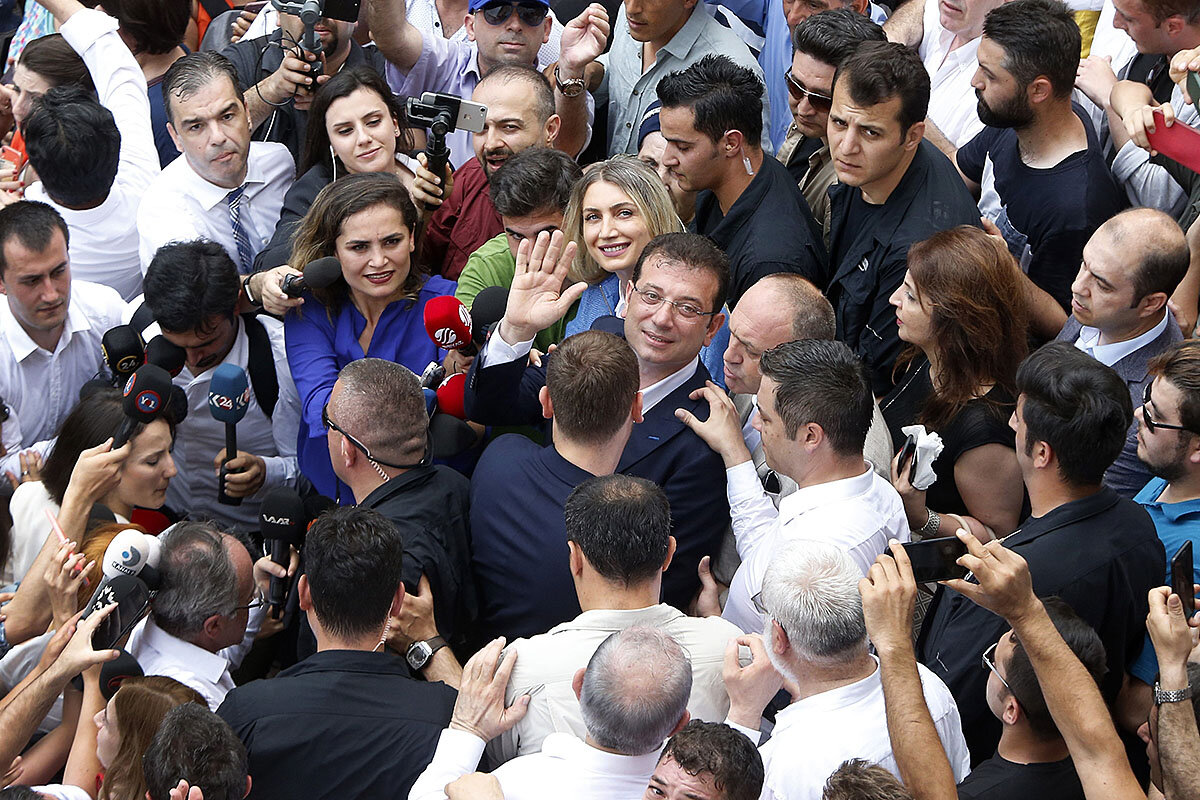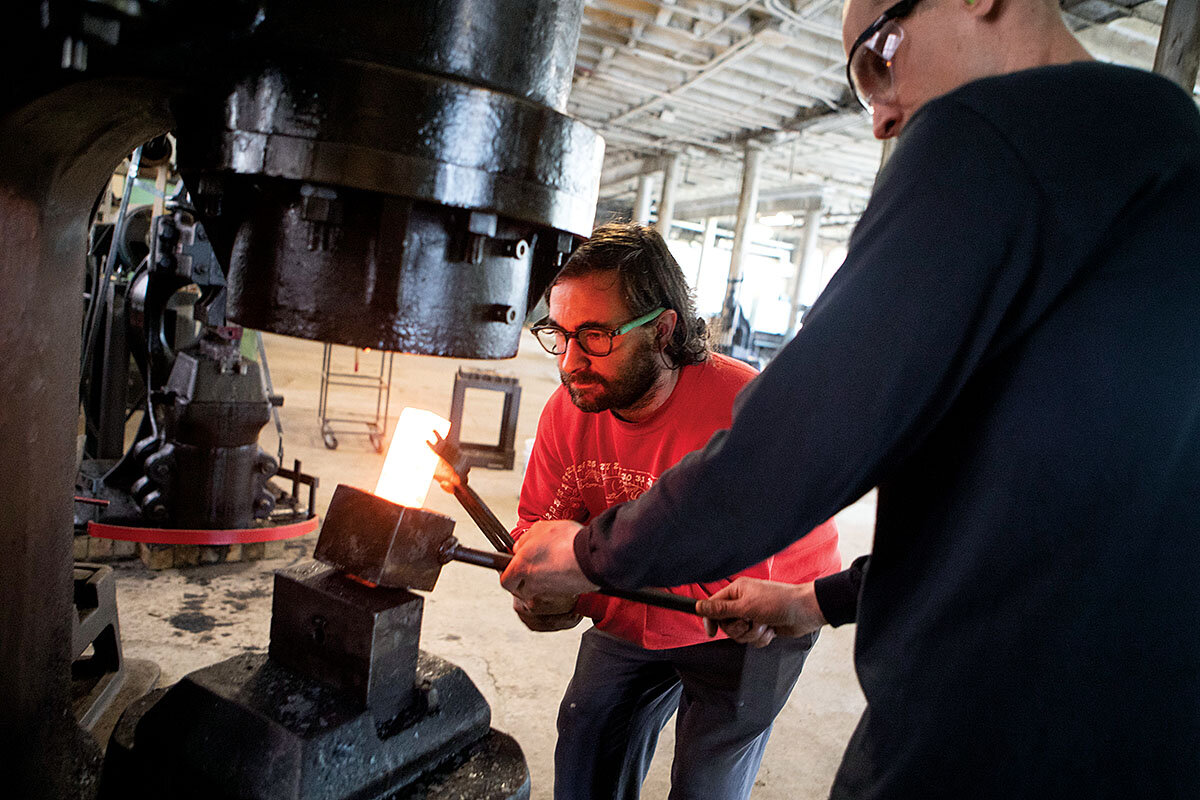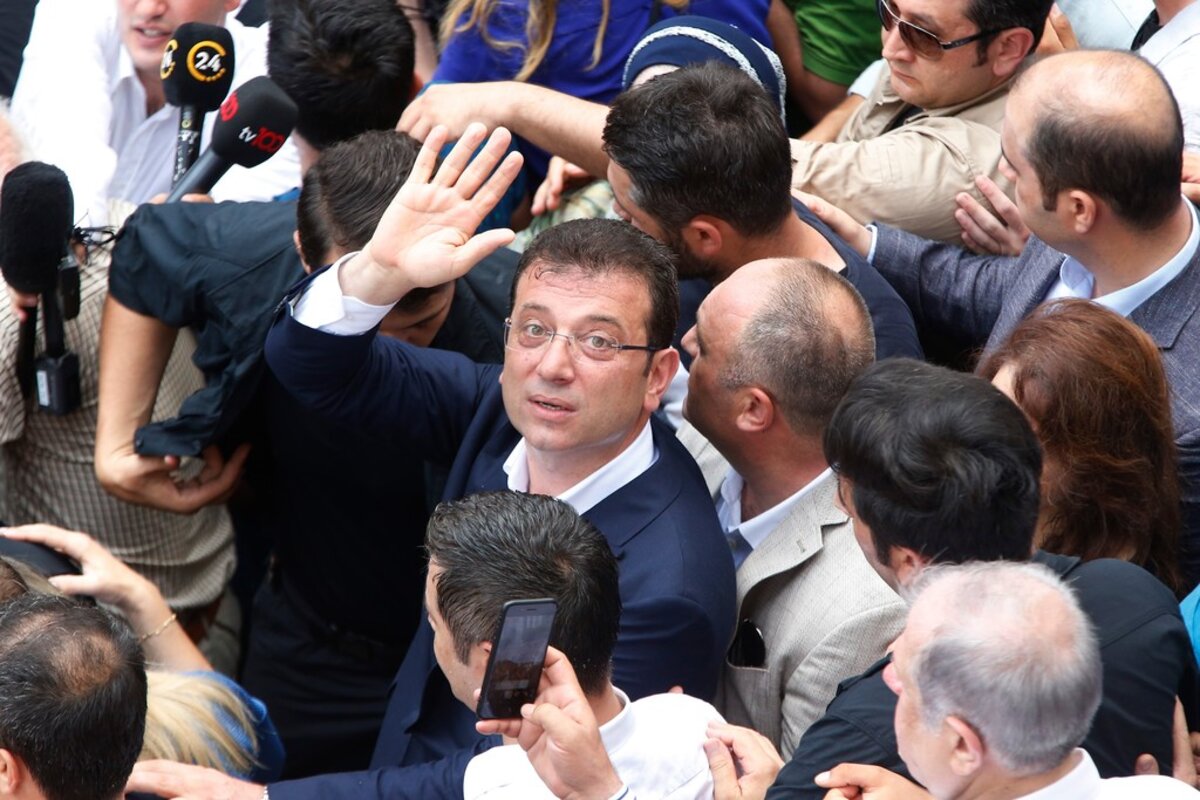It’s a bit counterintuitive. But Iran’s downing of a U.S. drone and the U.S. decision not to retaliate might be giving Iran room to move toward broader easing of tensions.
Monitor Daily Podcast
- Follow us:
- Apple Podcasts
- Spotify
- RSS Feed
- Download
 Clayton Collins
Clayton Collins
Welcome to your Daily. Today we look at Tehran’s perspective on the current standoff, cracks in Turkey’s power structure, a response to media suppression in Eastern Europe, personal decisions about the impact of air travel, and how an old mill town sees its future in … metalsmithing.
First, a check on the seasonal reach to unplug.
Today begins the first full week of Northern Hemisphere summer, the start of the languid days of disconnect for worker bees who are vacation-privileged.
Each year the tension between tech reliance and resistance builds. Never mind work email. It’s practically impossible to dodge the unrelenting time suck of tech, often cloaked as mere efficiency. The purveyors are aggressive: Facebook wants to be your banker. Uber wants to own transportation in every lane. Google seems inclined to surveil, Instagram to stage lives.
But, as in physics, reaction mirrors action. Simplicity movements aren’t new. But today come stories of deep analog pushbacks. One Maine family quit petroleum, electricity, and wherever it can, money. Others create worlds of their own on remote islands.
One island-life story shows a microculture really leaning in: A few hundred people off the coast of Norway – a place sunlit around the clock in summer owing to latitude – only half-jokingly take aim at an even more fundamental construct: They’re angling for a time-free zone.
Off the grid? Try off the clock. “All over the world, people are characterized by stress and depression,” an organizer reportedly said. “In many cases this can be linked to the feeling of being trapped by the clock.”
Make sure to put in for some vacation this summer.










